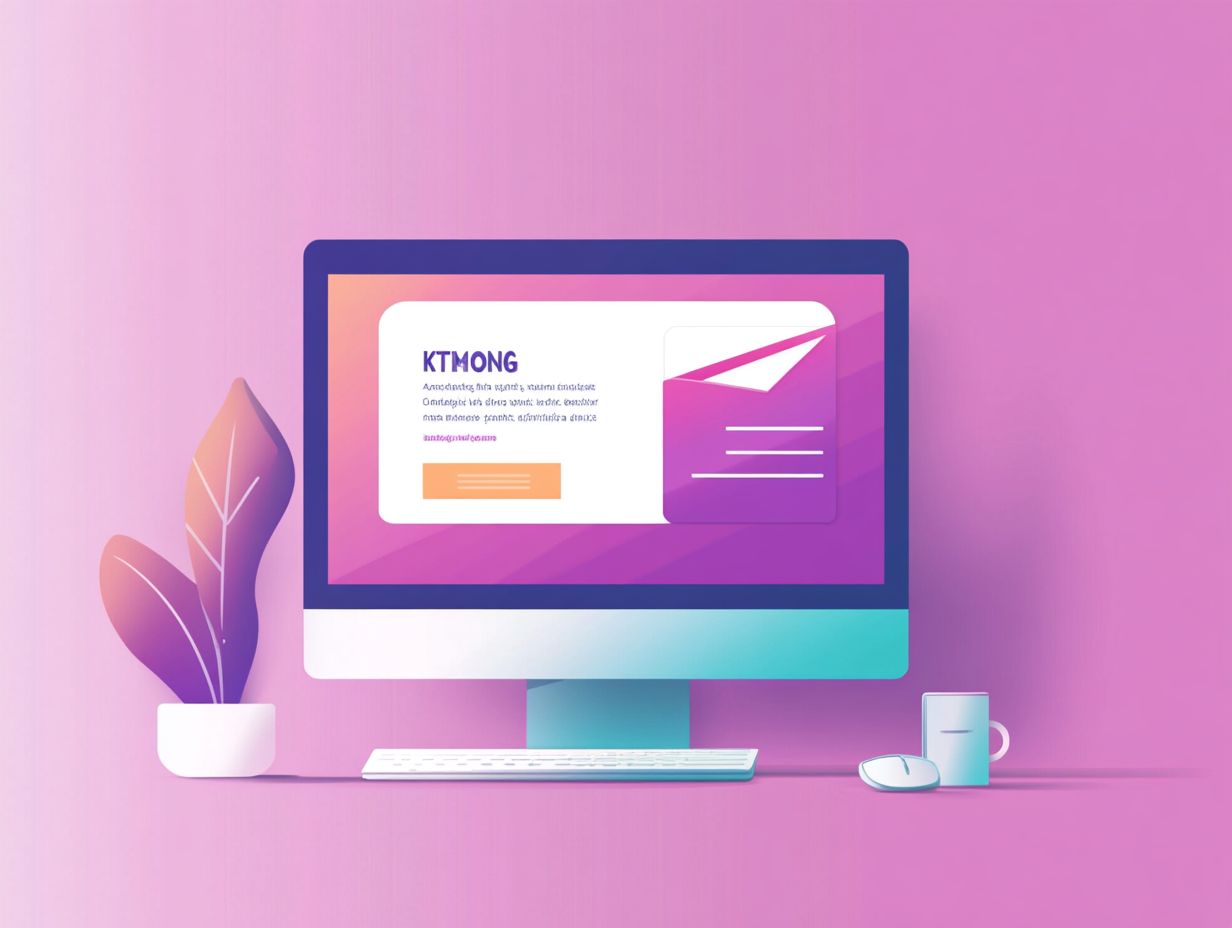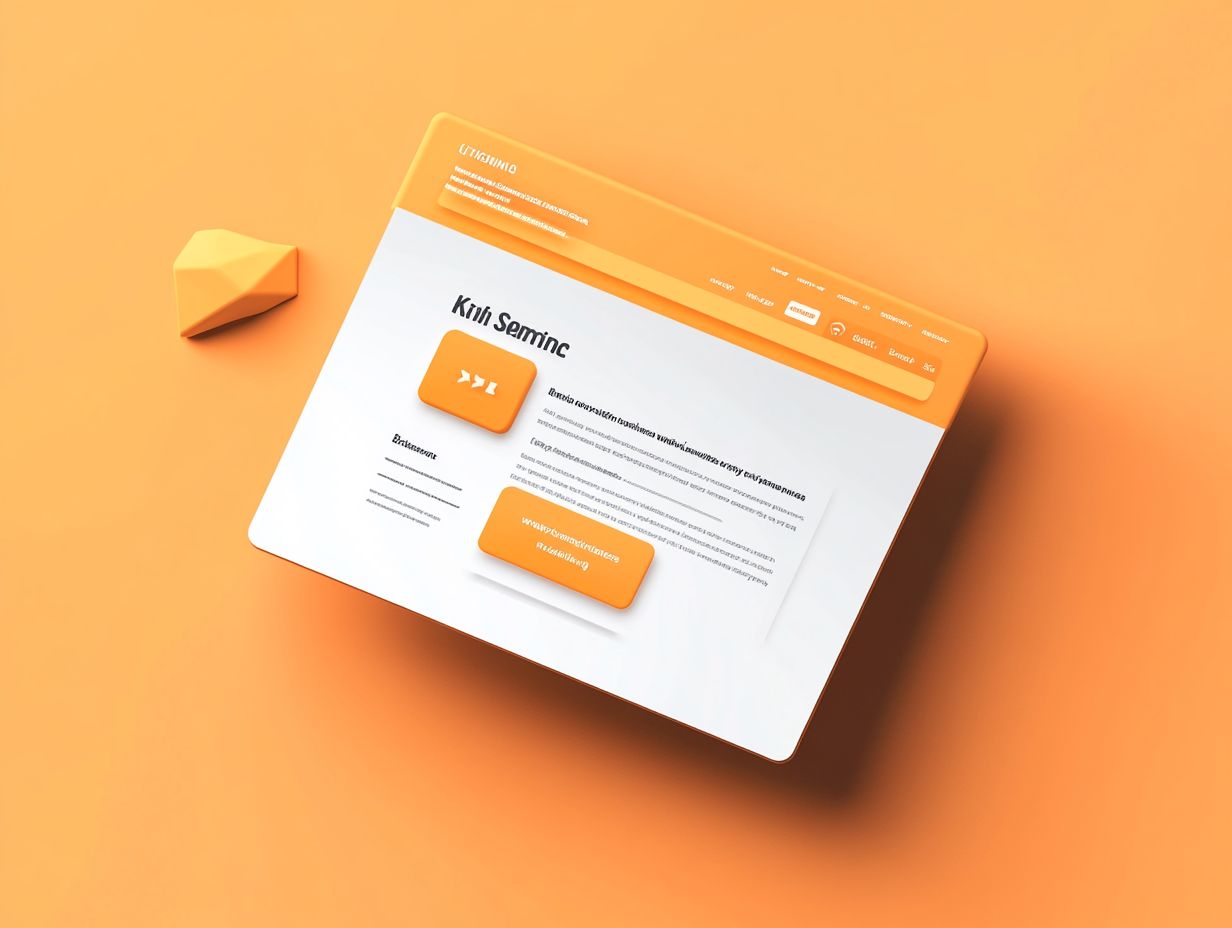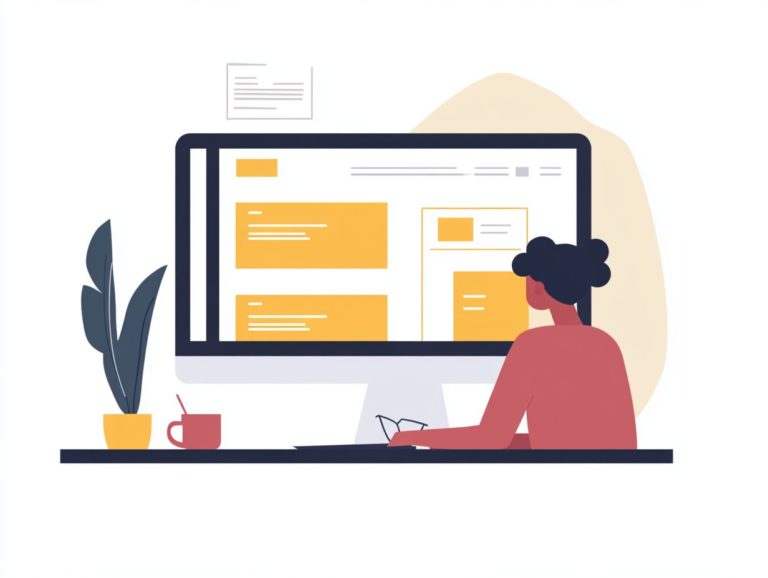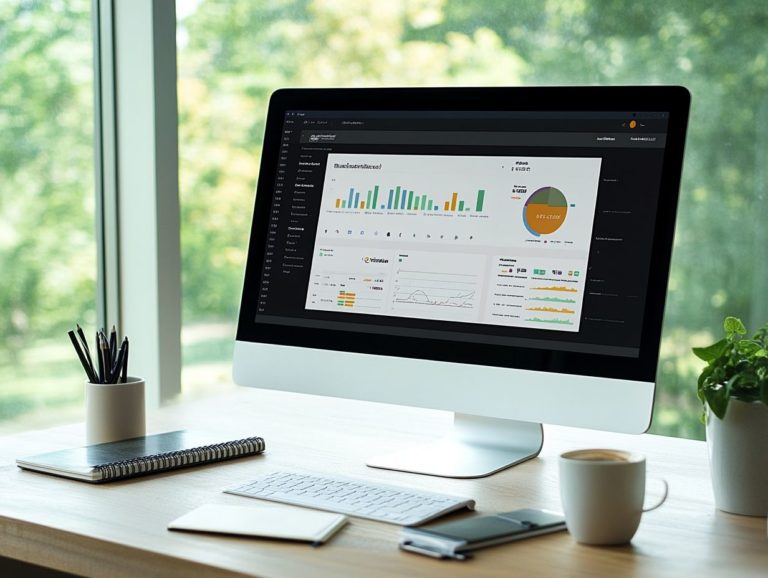How to Use Exit-Intent Popups Effectively
Exit-intent popups are a powerful tool for online marketers. They engage visitors right before they leave the site. By detecting when users are about to exit, these popups can grab their attention and drive conversions effectively.
This article delves into the essence of exit-intent popups, outlining their numerous benefits. You’ll discover how to design and implement them with finesse. Learn strategies to optimize these popups for various devices and audiences, ensuring they make the maximum impact.
Get ready to transform your website and skyrocket your conversions now!
Contents
- Key Takeaways:
- Understanding Exit-Intent Popups
- The Benefits of Using Exit-Intent Popups
- Collecting Valuable Data
- Designing Effective Exit-Intent Popups
- Key Elements and Best Practices
- Implementing Exit-Intent Popups on Your Website
- Step-by-Step Guide
- Maximizing the Impact of Exit-Intent Popups
- Frequently Asked Questions
- What are exit-intent popups and how can they be used effectively?
- How do I set up exit-intent popups on my website?
- What are some best practices for using exit-intent popups?
- Are there any downsides to using exit-intent popups?
- Can exit-intent popups be used for lead generation?
- How do I measure the success of my exit-intent popups?
Key Takeaways:

- Implement exit-intent popups to increase conversions and reduce bounce rates on your website.
- Collect valuable data by using exit-intent popups effectively.
- Optimize your exit-intent popups for different devices and audiences. Keep an eye on how they perform to make the most of every popup you create.
Understanding Exit-Intent Popups
Understanding exit-intent popups is essential for any online business striving to boost conversion rates and reduce cart abandonment. These dynamic ecommerce tools use advanced technology to analyze visitor behavior, triggering compelling popups right as a user is about to leave the site.
By thoughtfully integrating exit-intent popups into your strategy, you can engage customers more effectively. This paves the way for enhanced email collection and greater success on Shopify.
What are Exit-Intent Popups?
Exit-intent popups are sophisticated overlays that spring into action the moment your mouse signals that you might be leaving a webpage. Their primary purpose? To capture your attention and inspire further engagement.
These clever tools use simple methods to track mouse movements, helping identify when you’re likely to abandon the site. They present you with enticing offers or messages designed to spark your interest. By doing this, they serve a vital role in enhancing customer engagement and generating leads, transforming potential exits into valuable opportunities.
For example, a thoughtfully crafted popup might entice you with a discount on your first purchase, grant you access to exclusive content, or offer a free downloadable resource. This strategy grabs valuable leads and keeps them coming back for more!
The Benefits of Using Exit-Intent Popups
Utilizing exit-intent popups presents a wealth of benefits that can profoundly influence your business’s bottom line. This is especially true when it comes to enhancing conversion rates and strengthening customer retention.
These powerful popups employ persuasive copy and enticing offers, such as discount codes or limited-time deals, crafted to instill a sense of urgency. This encourages visitors to finalize their purchases before departing from your site.
Increasing Conversions and Reducing Bounce Rates
Exit-intent popups present a strategic opportunity for you to boost conversion rates and minimize bounce rates. Bounce rates refer to the percentage of visitors who leave your website without interacting. Minimizing this can lead to better conversions.
With the right timing and a touch of clever design, these popups can effectively halt the exit of potential customers, encouraging them to reconsider their decision. It s crucial to tap into the psychological triggers that guide user choices. Showcasing a compelling offer or delivering a heartfelt message can instill a sense of urgency and value that persuades users to linger a little longer.
For mobile users, exit-intent strategies need to be customized for smaller screens. This means using concise messaging and striking visuals that quickly grab attention. By incorporating elements like countdown timers or exclusive discounts, you can amplify the persuasive impact of these popups, ultimately transforming those fleeting visits into valuable conversions.
Collecting Valuable Data

One of the standout benefits of exit-intent popups is their remarkable ability to facilitate email collection. They also gather invaluable insights into visitor behavior and preferences.
This innovative tool springs into action just before a potential customer leaves your site. It presents a prime opportunity to capture leads by offering enticing incentives such as discounts or informative content. By analyzing the data you collect, you can uncover vital insights into what initially drew visitors in and monitor engagement trends over time.
With effective methods to group your audience in your email marketing, you can customize your messaging based on specific behaviors, preferences, and demographics. This creates truly personalized experiences.
This tailored approach boosts customer engagement, leading to higher conversion rates and nurturing long-term relationships with your audience.
Designing Effective Exit-Intent Popups
To design effective exit-intent popups, prioritize maximizing their impact. Strike a meticulous balance of engaging visuals, persuasive copy, and compelling headlines that resonate with your users’ needs.
This thoughtful approach ensures you capture attention just as they’re about to leave. Transform potential losses into valuable interactions!
Key Elements and Best Practices
The key elements of effective popups include strategic placement, a clear call-to-action, and ongoing A/B testing comparing two versions to see which one works better to analyze visitor behavior and optimize results.
To maximize impact, consider where these popups will appear on your website. Ideally, they should activate when a user shows signs of exiting, such as moving the cursor toward the browser’s close button. This timely engagement can effectively capture a visitor’s attention just before they leave.
By employing A/B testing, you can make meaningful comparisons between different designs and messages. Interpreting the data from both variations allows you to gain valuable insights into what resonates best with your audience, ultimately enhancing user experience and helping you retain visitors more effectively.
Implementing Exit-Intent Popups on Your Website
Implementing exit-intent popups on your website calls for a strategic mindset. Utilize responsive design to guarantee a seamless experience for your visitors, no matter the device they re using.
It’s essential to incorporate effective sales strategies that resonate with your target audience. Ensure that your message lands just right.
Step-by-Step Guide
A step-by-step guide for implementing exit-intent popups starts with defining clear exit strategies. Tailor these strategies to visitor behavior while aligning them with your email marketing goals.
In this initial phase, dive into analytics data to spot patterns, particularly the pages that tend to trigger high exit rates. By understanding the reasons behind user departures, you can craft popups that directly address their specific needs.
Next, selecting the right tools is essential. Robust platforms that facilitate A/B testing are highly recommended for fine-tuning these popups. Experimenting with various designs and messages helps uncover what resonates most with your audience.
Ultimately, seamlessly integrating these popups into the overall user experience is key. After launching, keep a close eye on metrics like conversion rates and bounce rates to evaluate their effectiveness. This enables you to make informed adjustments that enhance user engagement.
Maximizing the Impact of Exit-Intent Popups

To maximize the impact of exit-intent popups, focus on tracking and analyzing the results. This enables you to measure their effectiveness against your established marketing objectives.
By continuously refining your strategies for customer engagement, you can ensure that these popups not only catch attention but also drive meaningful interactions.
Optimizing for Different Devices and Audiences
Optimizing exit-intent popups for various devices and audiences is essential. This is especially true with the increasing prevalence of mobile exit intent. You need a design that works well on all devices, enhancing the user experience across all platforms.
A well-executed strategy ensures that popups adjust seamlessly, whether you re using a smartphone, tablet, or desktop. This adaptability is vital for delivering your messages effectively!
By analyzing visitor behavior like scroll depth and mouse movement you can create tailored messaging for specific segments. This boosts the chances of engagement.
Incorporating A/B testing testing two versions of a popup to see which one performs better into your approach helps you identify which designs or messages resonate best with different audience groups. This nuanced understanding can elevate exit-intent popups from mere notifications to powerful conversion tools.
Tracking and Analyzing Results
Tracking and analyzing the results of exit-intent popups is crucial for grasping their influence on visitor behavior. It also measures their success in meeting your email collection goals.
By utilizing various analytical tools like Google Analytics, heatmaps, and A/B testing software, you can uncover valuable insights into how users engage with these popups. Metrics such as conversion rates, bounce rates, and the time spent on pages offer a clearer understanding of what resonates with users and what falls flat.
Regularly reviewing these results gives you the power to implement strategies for continuous improvement. This ensures that your popups are not only effective but also aligned with your broader marketing objectives.
By incorporating user feedback and refining your targeting criteria, you can enhance user experience while simultaneously boosting your conversion rates.
Frequently Asked Questions
What are exit-intent popups and how can they be used effectively?
Exit-intent popups are alerts that show when a user is about to leave a site. They capture attention and encourage users to stay or take action. To use exit-intent popups effectively, they should be strategically placed and offer a valuable incentive or solution to the user’s needs.
How do I set up exit-intent popups on my website?
There are several ways to set up exit-intent popups on your website. You can use a popup plugin or software, such as OptinMonster or Sleeknote, which offer customizable templates and targeting options. Alternatively, you can also use custom code to create your own exit-intent popups.
What are some best practices for using exit-intent popups?
When using exit-intent popups, it’s important to consider the timing, design, and messaging. Popups should only appear when a user is about to leave the site. The design should be visually appealing and on-brand, while the messaging should be clear and offer value to the user.
Are there any downsides to using exit-intent popups?
While exit-intent popups can be effective in retaining website visitors, they may also annoy some users if they appear too frequently or are difficult to close. It’s important to test and monitor the performance of your popups to ensure they are not negatively impacting user experience.
Can exit-intent popups be used for lead generation?
Yes, exit-intent popups can be a powerful tool for lead generation. By offering a valuable incentive, such as a discount or free resource, you can encourage users to provide their contact information and convert them into leads before they leave your site.
How do I measure the success of my exit-intent popups?
The success of your exit-intent popups can be measured through various metrics, such as conversion rate, click-through rate, and bounce rate. It’s important to regularly track and analyze these metrics to optimize the performance of your popups and achieve your desired goals.







